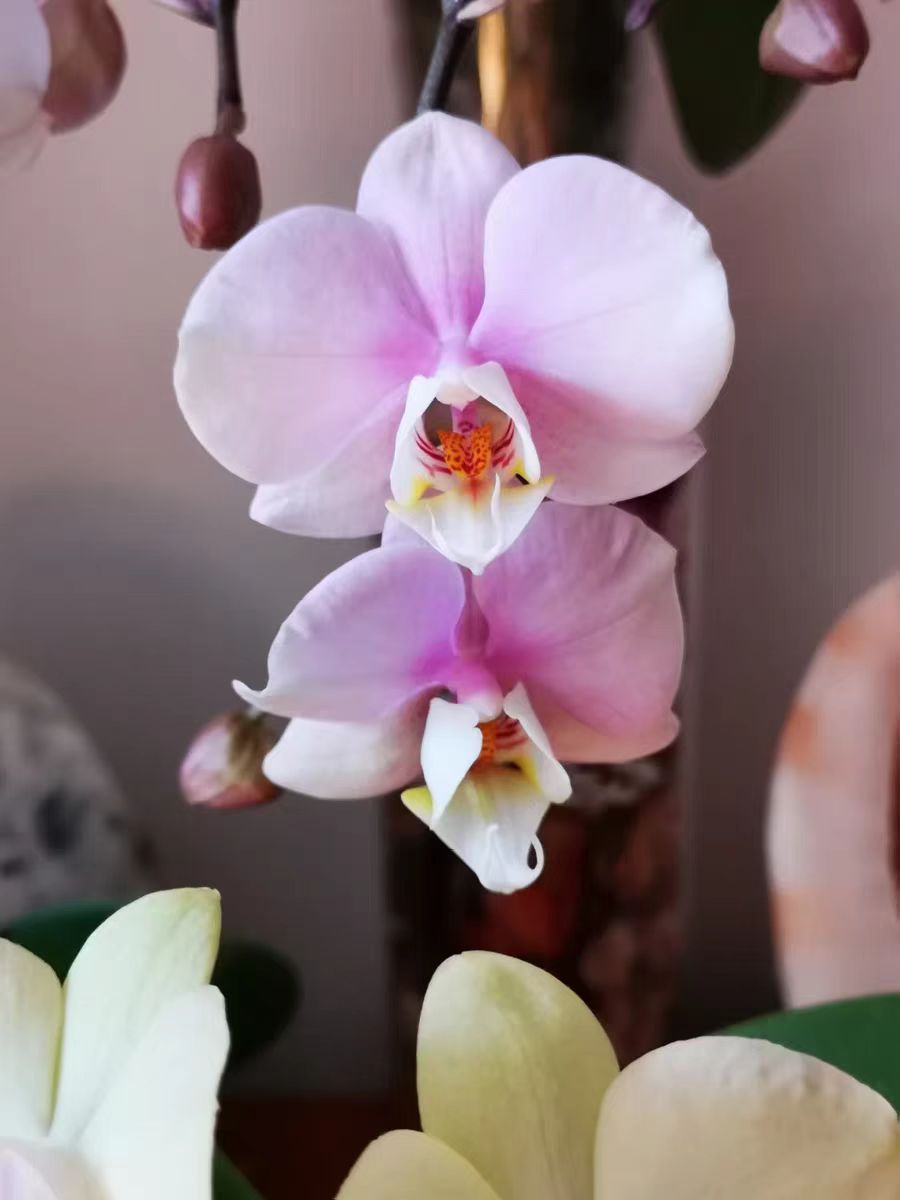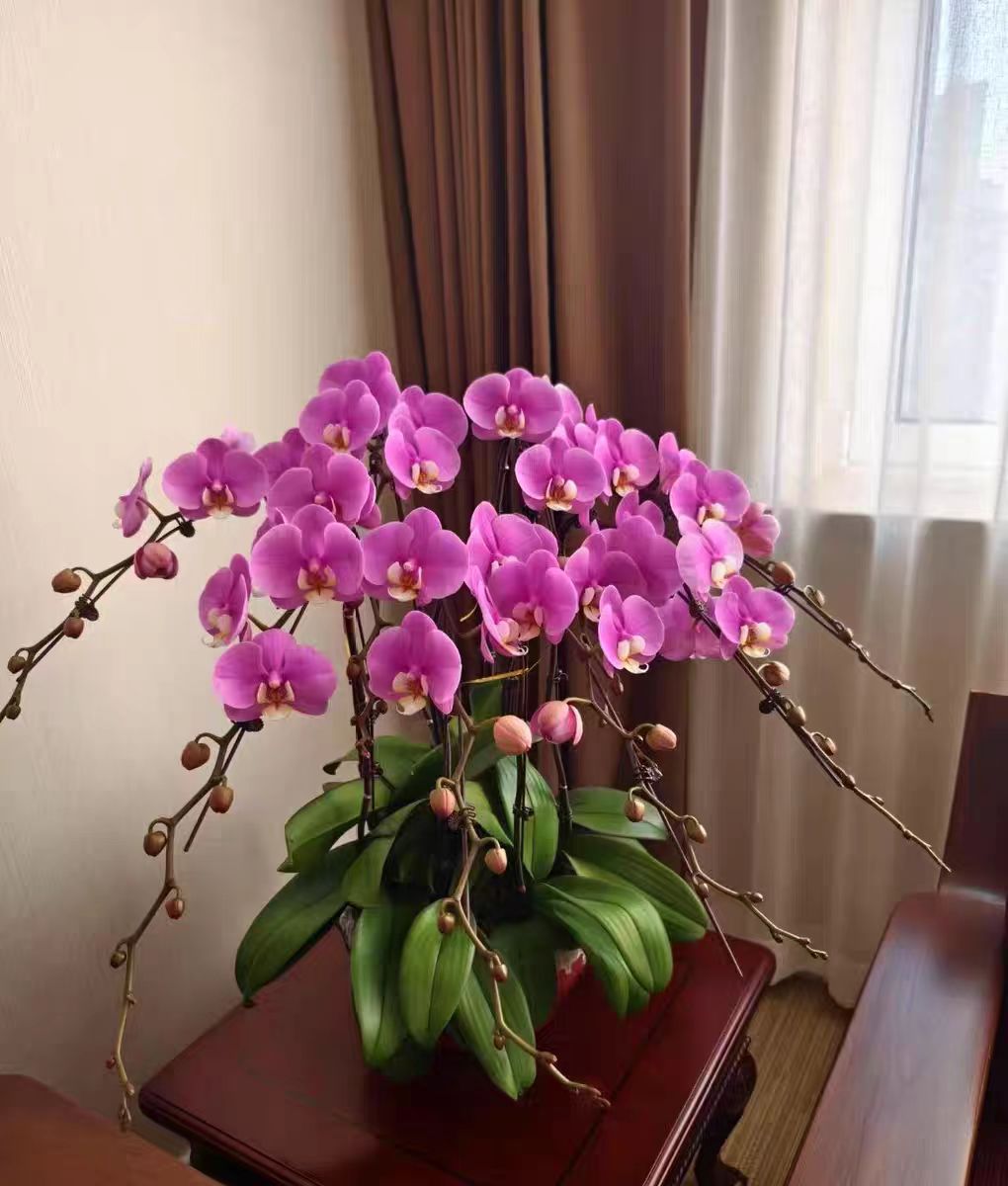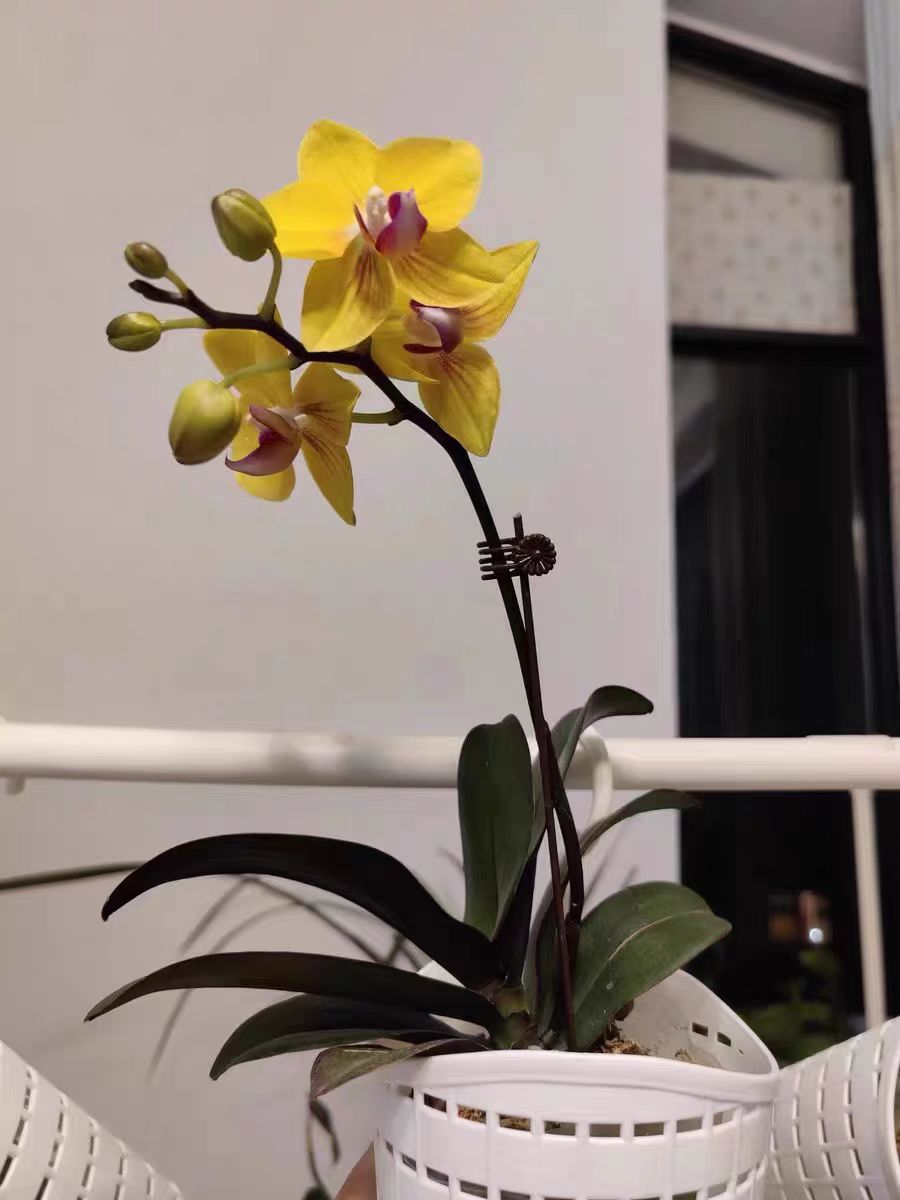In the process of Phalaenopsis cultivation, watering is a crucial part. Among them, the choice of water quality and the control of watering amount deeply affect the healthy growth of Phalaenopsis.
Phalaenopsis indeed has certain requirements for the water quality of watering. Ideally, Phalaenopsis prefers soft water that is slightly acidic and low in mineral content. Rainwater in nature is a very suitable choice. During the process of falling, rainwater dissolves some carbon dioxide in the air, making it slightly acidic, which can well meet the growth needs of Phalaenopsis. Moreover, rainwater contains fewer impurities such as minerals and will not accumulate in the soil, thus effectively avoiding problems such as soil compaction and root damage caused by salt accumulation.
In contrast, the tap water we use daily has often been disinfected and contains a certain amount of chlorine. Although the content may be low, the residual chlorine may still have a negative impact on the roots of Phalaenopsis in the long term. If only tap water is available, it is recommended to collect the water and let it stand in an open container for 2 - 3 days to allow the chlorine in the water to volatilize fully before using it for watering. In addition, water with a high mineral content such as mineral water is also not suitable for frequently watering Phalaenopsis. Excessive minerals will continuously accumulate in the substrate, changing the physical and chemical properties of the substrate, affecting the normal absorption of water and nutrients by the roots, and hindering the healthy growth of Phalaenopsis.
When watering Phalaenopsis, if the amount of water is not well - controlled and too much water is poured, the plant will show a series of obvious symptoms. First, the abnormality can be detected from the state of the leaves. The originally plump and shiny leaves will gradually lose their vitality, become dull and start to turn yellow. As the waterlogging situation worsens, the leaves will become soft and rotten, and even transparent water - stain - like patches will appear, because too much water causes the cells to absorb too much water and rupture.
The changes in the roots are more crucial. The healthy roots of Phalaenopsis are usually white or light yellow in color and relatively tough in texture. When watering is excessive and the roots are long - term soaked in a humid environment, they will start to rot. The color of the rotten roots turns dark brown or black, and they are easy to break when gently touched, losing their normal absorption function. Due to the damage of the roots, the plant is unable to normally absorb water and nutrients, and the plant will also show overall depression, slow growth of new leaves, difficulty in flower bud differentiation, and in severe cases, it may even lead to the death of the plant.
Watering Phalaenopsis is by no means a trivial matter. The correct choice of water quality and the precise control of watering amount are the key factors to ensure the healthy growth and beautiful blooming of Phalaenopsis. Only by deeply understanding these key points can Phalaenopsis thrive under careful care.
Is there any requirement for the water quality when watering Phalaenopsis?

Share with
Tagged in :




Leave a Reply